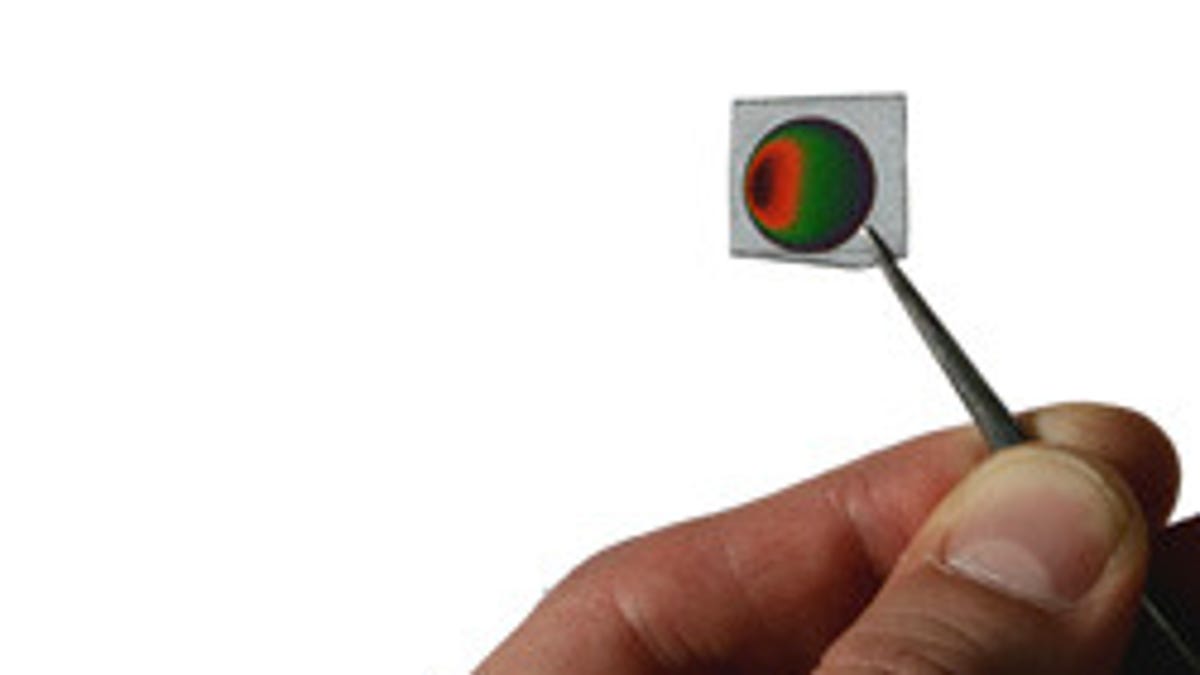Silicon 'nose' turns cell phones into toxin detectors
A new type of sensor that can be embedded in cell phones could map both the location and extent of gas leaks and toxins in the air.

The developers of a tiny silicon chip that can be embedded in cell phones say it could detect and then map the location and extent of gas leaks and toxins in the air.
"Cell phones are everywhere people are," says Michael Sailor, professor of chemistry and biochemistry at the University of California at San Diego, who heads the research effort. "This technology could map a chemical accident as it unfolds."
Sailor's team at UCSD is working with a San Diego start-up called Rhevision to develop the tiny sensor. They're currently building a prototype that will link to a cell phone.
The sensor, described in the university's news release as a porous flake of silicon that works like a nose, changes color when it comes into contact with specific chemicals, which can be searched for by manipulating the shape of the pores so that they respond to specific chemical traits.
A megapixel camera smaller than a pencil eraser captures the image from the chip's array of nanopores, and the resulting images, seen through a supermacro lens developed by Rhevision, come into focus through changes in fluid instead of a typical lens' moving parts.
"The beauty of this technology is that the number of sensors contained in one of our arrays is determined by the pixel resolution of the cell phone camera," Sailor said. "With the megapixel resolution found in cell phone cameras today, we can easily probe a million different spots on our silicon sensor simultaneously. So we don't need to wire up a million individual sensors. We only need one."
Eventually, the sensor could be designed to distinguish between hundreds of unique compounds, as well as recognize those that are harmful.
For starters, the team's chips can already distinguish between methyl salicylate, a compound used to simulate the chemical warfare agent mustard gas, and toluene, a common additive in gasoline.
Top priorities include helping emergency responders detect carbon monoxide through sensors on their masks, as well as helping miners detect the buildup of explosive gases with enough time to evacuate.

